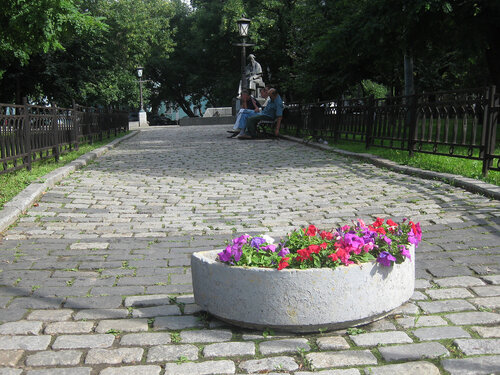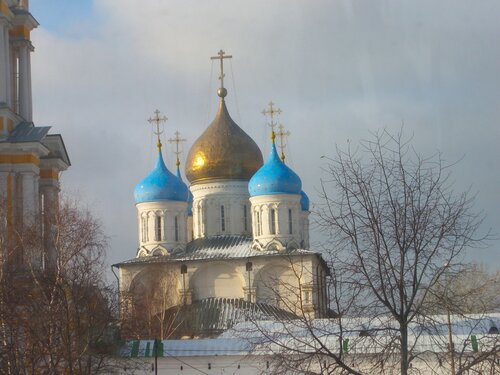
New Year is the main holiday of the year in Russia– the most welcome and the most beautiful one, rich in history, fascinating traditions and amusing customs.
New Year Celebrations in Pagan Rus’
The tradition to celebrate the year’s beginning goes back to hoary antiquity. The ancients usually timed the New Year to the beginning of nature’s revival and so it mainly fell on March.
In Old Rus’ there was for a long time the so-called pre-summer, i.e. the first three months of the year, starting with March. It was celebrated as avsen’, ovsen’ or tusen’, which later turned into the New Year. So, the first six months of the year formed pre-summer and summer, whereas the last six months were winter time. The transition from autumn to winter remained in the background, just like the turning of spring into summer. Initially the New Year was supposedly celebrated on March 22, the day of vernal equinox. Thus, Maslenitsa (Shrovetide) and the New Year celebrations coincided: winter was driven away, thus giving way to spring and the New Year.
New Year after Christening of Rus’
Together with Christianity (the year 988 marking the Christening of Rus’) Russia adopted the new chronology system - the Mundane Era of Constantinople, as well as the new European Julian calendar with names of months fixed. March 1 came to mark the beginning of the year.
According to one version, in the end of the 15th century, or, by another version, in 1348 the Orthodox Church shifted the beginning of the year to September 1 in conformity with the Nicene canons. The shift was to associate with the growing importance of Christian church in the state life of the Old Rus’. Thus, the New Year was celebrated on September 1, the festivities accompanied with decorations of rowan trees and bright red berries.
New Year Innovations of Peter the Great
In the end of 1699 the Russian Emperor Peter I the Great issued an order to celebrate the New Year’s beginning on January 1 (by the Julian calendar at that) and for this purpose to decorate houses with pine-tree, fir-tree, and juniper branches.
In the epoch of Peter the Great the Julian calendar was still generally accepted in many Protestant countries of Europe, and Russia then celebrated the New Year together with them, yet 11 days later than in Catholic countries, using the Gregorian calendar since1582. When in the 18th century practically all Protestant countries switched over to the Gregorian style (whereas Russia adhered to the Julian calendar until 1918), the New Year in Russia again stopped coinciding with that in the Western Europe.
Abolition of the Holiday and its Revival
In 1929 Soviet authorities abolished Christmas and fir-tree decorations that were declared “priest-like” customs. The New Year was also abandoned. However, following the article “Let’s Organize a Nice Fir-Tree for Children for the New Year!” by Pavel Postyshev, published in the major Soviet newspaper Pravda in the end of 1935, fir-trees and New Year festivities returned to people’s homes on December 31, 1935. Yet, it was not until 1949 that January 1 became an official day-off.
New Year Nowadays
The festive preparations start already in the mid December. The streets, shops, companies and enterprises are decorated with garlands, toys and posters; adorned fir-trees appear outdoors. Every city, town or settlement has its major fir-tree lit with electric garlands set up in the central square. Fascinating sparkling ice sculptures, snowmen and figures of Father Frost and Snow Maid are placed all around the fir-tree.
New Year’s Fir-Tree

In the end of December homes are also decorated with fir-trees, which can be purchased at fir-tree bazaars or cut in the forest (with a special license required). Fir-trees are traditionally kept in homes till January 13-14, when the Russians celebrate the Old New Year.
Initially fir-trees were decorated with wooden toys, fruits, nuts and sweets. Decorations of glass came into fashion somewhat from 1850.
Modern fir-trees are decorated with glass balls and toys, garlands and tinsels. Figures of Father Frost and Snow Maid together with New Year presents are hidden under the fir-tree. Some families are lucky to be visited by alive Father Frosts and Snow Maids who bring the presents to well-behaved children.
Festive matinees, called New Year’s Yolka (i.e. fir-tree) are traditionally held in kindergartens and schools. Children dressed up as hares, snowflakes, and other characters, take part in the masquerade, sing songs, play and dance around the fir-tree and get presents from Father Frost and Snow Maid.
The most famous Russian New Year’s song turns 103 this year; its lyrics were written by Raisa Kudsheva, a teacher by profession, and later set to music by the amateur composer Leonid Bekman. Almost a folk song nowadays, it tells about a small fir-tree that was born in the forest and now have come to children and brought lots of joy to them.
V lesu rodilas yolochka,
V lesu ona rosla,
Zimoy i lietom stroinaya,
Zelyonaya byla.
In the forest a fir tree was born,
In the forest the fir tree grew,
In winter and summer she
stands tall,
And oh how green was she.
Father Frost and Snow Maiden
The New Year in Russia is impossible without the magic crowd puller Ded Moroz (Father Frost) and his fairy granddaughter, companion and helpmate Snegurochka (Snow Maiden)! They come to greet kids with the New Year and give them long-awaited gifts. In spite of some similar details, such as a snow-white beard, long gown and present-giving function, Father Frost and Santa Claus are quite different characters.
Most Important Moments of the New Year’s Night
The celebrations start at about 11 pm, when the family is seated at the festive dinner. Shortly before 12 pm they toast “for the old year”, remembering and paying tribute to the good things it brought about. It is a custom in Russia to listen to the speech of the head of state broadcasted over TV and radio. The President traditionally summarizes the achievements of the past year and wishes Happy New Year to the citizens of Russia.
After the speech, at midnight sharp, the country listens to the Kremlin chimes, which signalize the beginning of the New Year. The chimes are followed by the country’s hymn.
During these exciting minutes all are drinking Champaign and wish each other Happy New Year. Afterwards lots of people like to go outdoors to let off all sorts of fireworks and bangers, and lit Bengal lights. Festive performances with songs, dances and games are held at the central squares of cities and towns.
As for lovers of peace and silence, their day will come to, when after the uproarious New Year’s night the streets turn unusually quiet and calm for a few days, even in megalopolises like Moscow.

New Year Popular Believes
There is a whole range of believes concerning the celebrations of the New Year. The most famous saying asserts: “As you meet the New Year, so will you spend it”. Thus everyone does one’s best to celebrate this decisive holiday merrily and in the hearty company of friends and family.
They also say, that one must “leave all the debts to the old year”, i.e. return the debts before the beginning of the coming year. On the New Year’s Night one ought to be wearing brand new clothes, which at the best should be of the “lucky colours” of the year to come.
One of the most significant and breath-taking elements of the New Year’s Night is making wishes. They believe that the utmost wishes made on the New Year’s Night will surely fulfill in the New Year. There is a unique method of making wishes that gives almost a hundred percent fulfillment guarantee: while the chimes are striking twelve, one should write the wish on a sheet of paper, burn it on a candle, mix the ashes in his/her glass of Champaign and drink it before the chimes cease striking.
Try it yourself!
Source:www.russia-ic.com







































